MASER
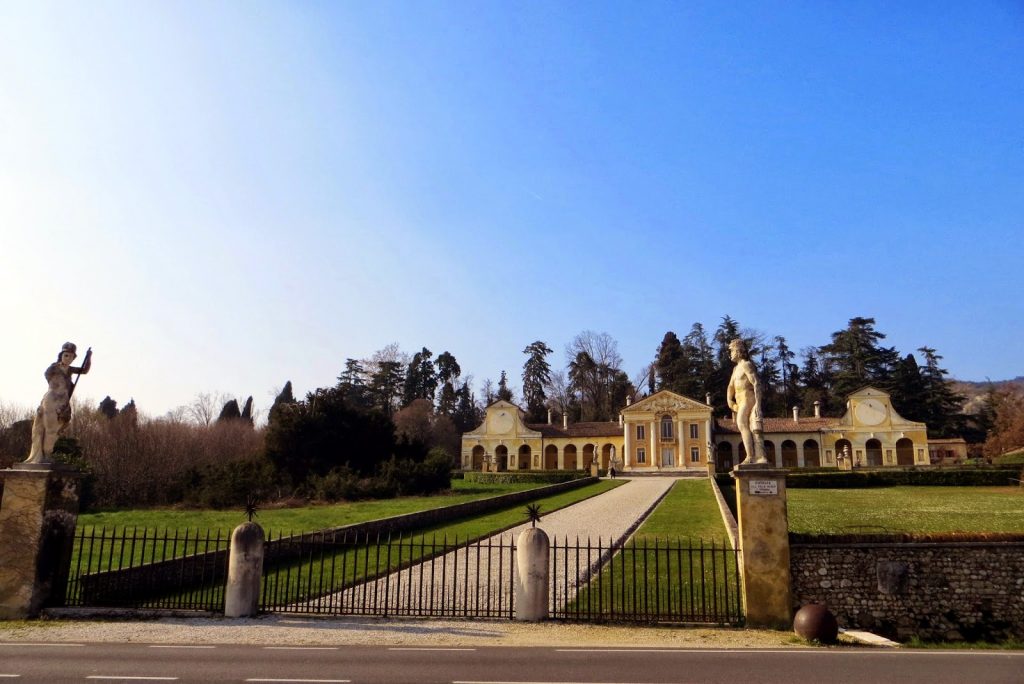
In Maser, a small town at the foot of the Alps, is Villa Barbaro, one of Andrea Palladio’s masterpieces, built around 1560. Inspired by Greek-Roman architecture, Palladio is considered one of the most influential personalities in the history of Western architecture. The villa shows significant differences from the other Palladian works found near Vicenza, and defines a new kind of country villa where the main house and the barns are aligned in a compact architectural unit. In Maser, the linear plan guaranteed better visibility from the road that runs on the slopes of a hill below the villa. Inside the villa visitors can admire six rooms with frescoes by Paolo Veronese, constituting the most extraordinary series of frescoes of sixteenth century Veneto. Using trompe l’oeil, perspective and other spatial effects, Veronese creates in the frescoes the illusion of the natural environment surrounding the villa at the time of its construction. From the halls you can see the Nymphaeum with stucco work by Alessandro Vittoria. In the park there is a small carriage museum open to visitors.
ASOLO
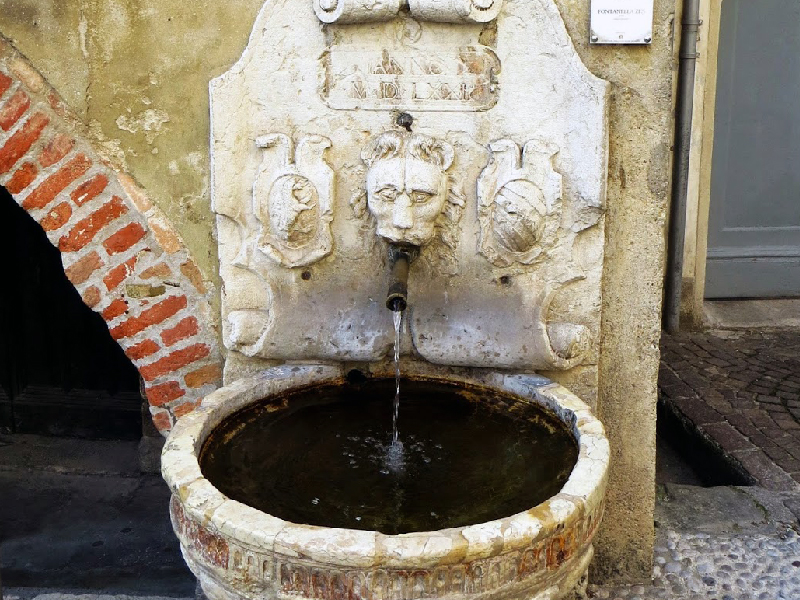
At the entrance to the old town just past the Porta Loreggia is a medieval palace with a lion fountain.

In the historic centre, the facades of tall houses are adorned with porches, towers and double lancet and triple lancet windows.

In Piazza Maggiore is a sixteenth century fountain, the cathedral and the small town museum with a collection of Eleonora Duse’s memorabilia. This famous Italian actress chose Asolo as her residence.
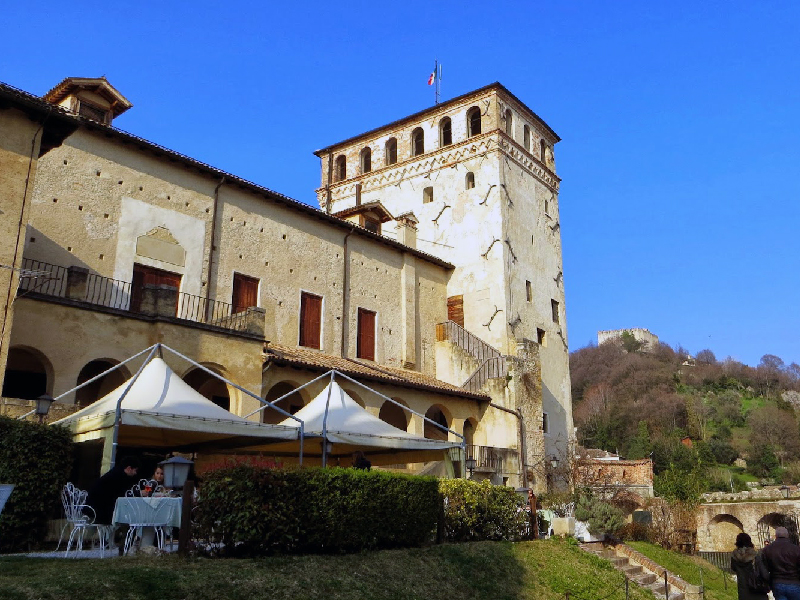
The picturesque Via Regina Cornaro leads to the castle where the Queen of Cyprus, Caterina Cornaro, lived after the death of her husband, which caused her to lose her position in his kingdom. Passing under the gateway dominated by the winged lion and the banner of Asolo, you can admire the ruins of the old castle and the view over the village and the Treviso pre-alps.
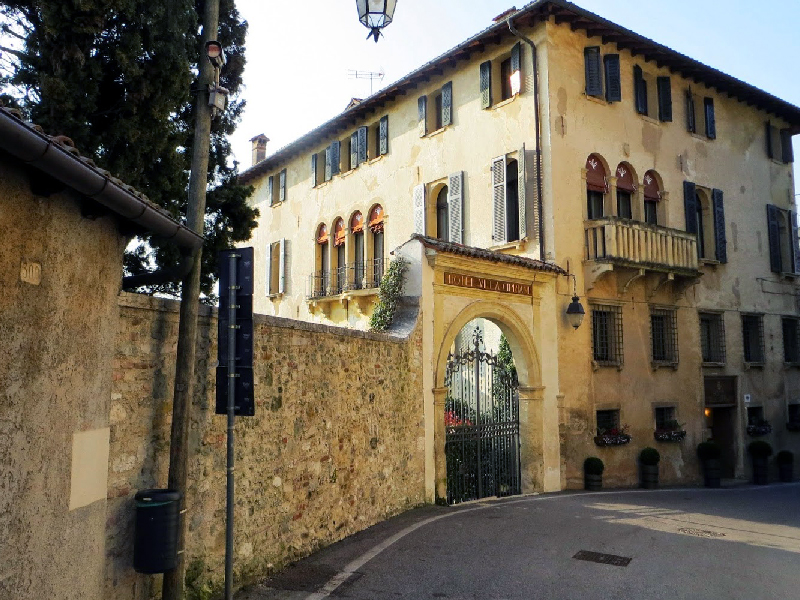
Walk along via Canova to see the house where Eleonora Duse lived, and arrive at Villa Cipriani, a luxury hotel.
Piazza Maggiore is the starting point of a lovely walk among the hills that leads to the fortress and the charming villas.
POSSAGNO
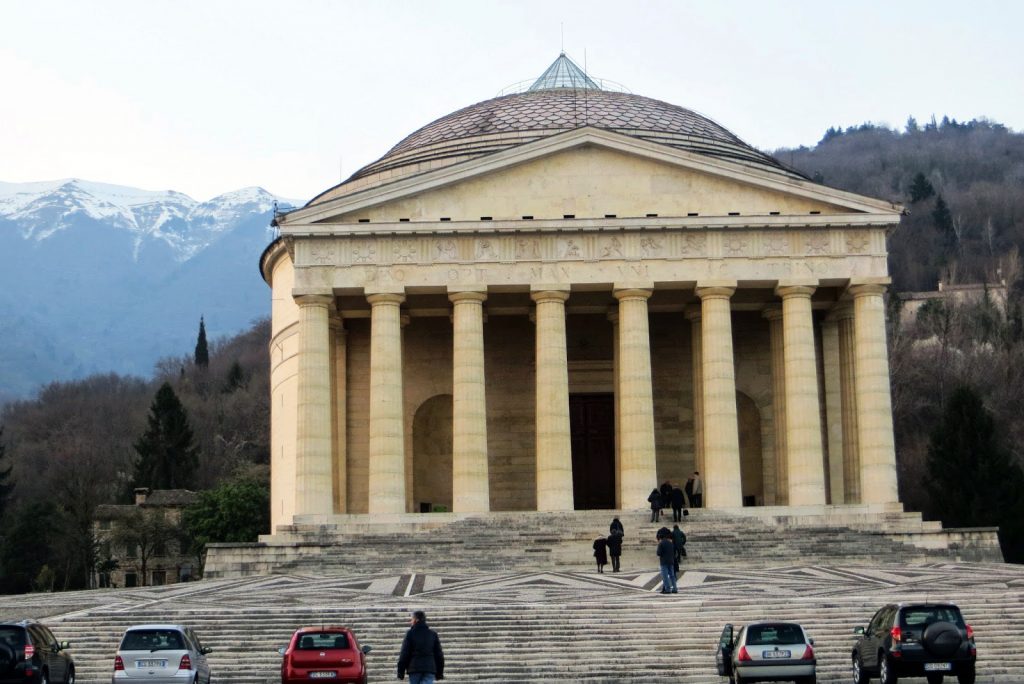
Set on the hills at the foot of Monte Grappa, Possagno is famous for being the birthplace of Antonio Canova. At the centre of the village, the home where the famous sculptor was born today houses the renowned collection of plaster casts featuring many original plaster models and studies the major Italian interpreter of neoclassicism.
Opposite the Gallery is the start of a long uphill path leading to the temple, designed by Canova and inspired by the shapes of the Pantheon in Rome. Inside you can admire the magnificent coffered dome and Canova’s tomb.
CASTELFRANCO
The castle that encloses the historical centre of Castelfranco was built in a strategic position at the end of 1100 in order to defend the border from the rival cities of Padua and Vicenza. In the beginning it was populated by one hundred families of free men who were given tax-free farms and homes, hence the name Castelfranco: a castle “free” from taxes. Among the highlights are:
- the castle, defended by high red brick walls, which includes six towers and is surrounded by a moat.
- the Duomo of 1723, designed in neoclassical style by the architect of the castle Francesco Maria Preti. The chapel to the left of the presbytery hosts the famous altarpiece by Giorgione.
The first chapel of a hospital-lazaret was built before the year 1000 at the intersection of the Roman consular roads Postumia and Aurelia. Following the construction of the walls in 1217, the hospital was moved to Via Bastia Vecchia and run by the Brotherhood of the Battuti friars and the order of the Servants of Mary, who built the convent and the present church of St. James the Apostle, both on a plan of architect Massari. Built by the Servants of Mary, the monastery is now home to the Conservatory of Castelfranco Veneto.
The Academic theatre designed by Preti and completed in 1778 was built with funding from 21 citizens belonging to the noblest families of the city. It combines the characteristics of a traditional open air theatre and those of an eighteenth-century playhouse.
BASSANO DEL GRAPPA
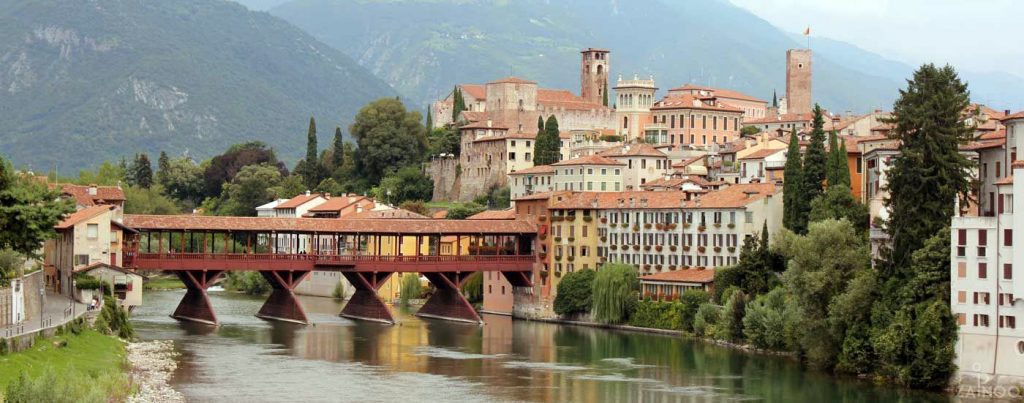
The town of Bassano del Grappa is famous for the Old Bridge on the Brenta, called Ponte degli Alpini. The bridge was built for the first time in 1209. After it was destroyed by a flood it was redesigned in 1569 by Andrea Palladio and realized entirely in wood for a length of 58 meters on a base of four triangular wooden poles aligned to the water flow and covered with a roof supported by columns. In 1748 the bridge was once again destroyed by a flood and rebuilt three years later. In 1945, during the Second World War, the bridge was blown up by partisans in order to protect the city, and rebuilt in nine months in 1947 based on the original plan by Palladio. From the bridge, visitors can enjoy wonderful views of the surrounding mountains and of the Brenta.
The following villas are particularly impressive:

Villa Angarano Bianchi Michiel. Originally designed by Palladio around 1548, but whose middle section is the work of Longhena in the seventeenth century.
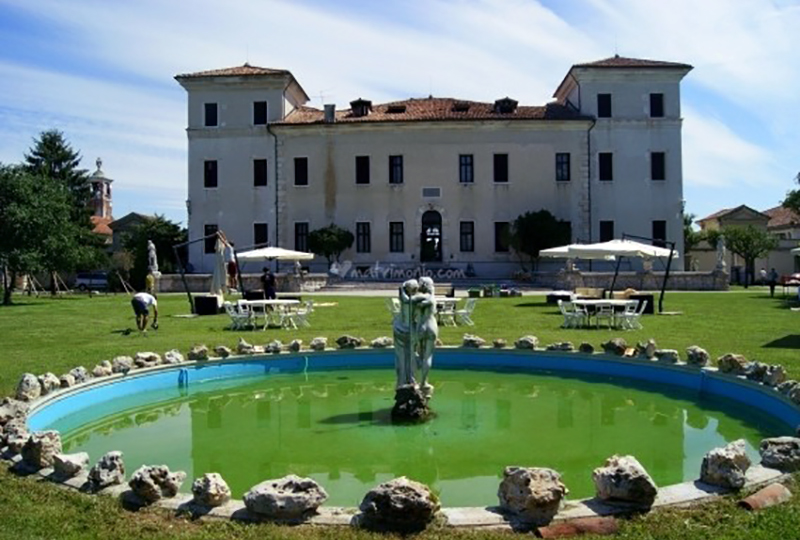
Villa Rezzonico Borella, XVII-XVIII century, with a chapel, a park and a garden, is attributed to architects Longhena and Massari. Inside the villa are statues and stucco decorations attributed to Canova.
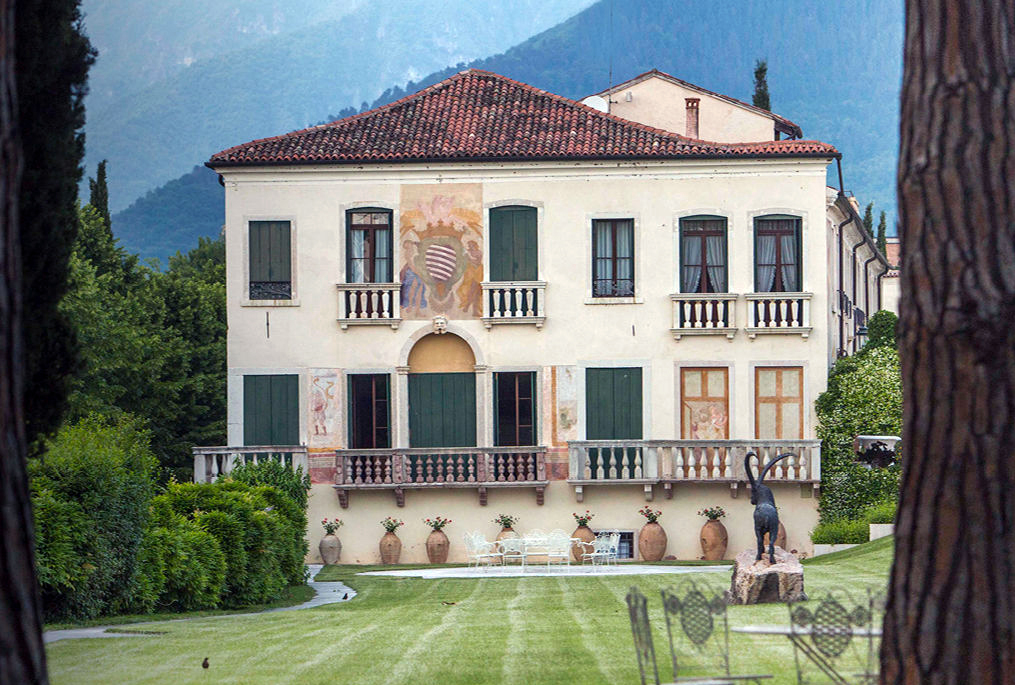
Villa Ca ‘Erizzo Luca, built in the fifteenth century, is one of the most striking architectural complexes of Bassano.
Among the places of interest in the centre are the Palazzo Pretori, the Palazzo Sturm and the Palazzo Bonaguro.
The Duomo, built within the city walls, was already documented in 998. Rebuilt in 1417, it features a beautiful bell tower and, inside, an impressive twelfth century wooden crucifix, as well as the Filarete cross of 1449.
The Church of St. Francis features a gabled facade with a porch with round arches erected in 1306. Inside are the Annunciation by Guariento d’Arpo and a painted wooden crucifix. Some historians claimed that the church was built as a result of a vow made by Ezelino the “balbo” in the midst of a sea storm while on a sea voyage returning from the Second Crusade, around 1148. At the start of the Ponte degli Alpini bridge is the oldest grappa distillery in Italy, Bortolo Nardini, on the bridge since 1779. In the vicinity there is also the grappa distillery Poli.
MAROSTICA
Marostica has two castles, the Upper Castle and the Lower Castle, joined by a long wall of about 1800 metres. The two castles were built in 1312, while construction of the wall began on 1 March 1372.
Through four doors you enter the old town characterized by the Piazza degli Scacchi. Marostica is famous for a traditional re-enacting show in historical costume, which takes place the second weekend of September in even-numbered years: the “Chess game with living characters”, inspired by a story set in 1454. According to the story (which according to some is a legend) two youths of noble birth from Marostica, Rinaldo d’Angarano and Vieri da Vallonara, both fell in love with the beautiful Lionora and challenged each other to a duel, as was the custom at the time. However the lord of Marostica and father of Lionora, Taddeo Parisio, forbade the duel and decreed that the rivals would play a game of chess instead (the “Nobil Ziogo de li scacchi”). Taddeo decided that the winner of the singular challenge would marry the beautiful Lionora while the loser of the game would marry her younger sister.
TREVISO
The city is surrounded by Venetian walls that were built in 1509 to defend it from from Venice attack. The defence system was supplemented by a hydraulic system that used the waters of the canals to flood the surrounding countryside as a further defensive measure.
The heart of the city is Piazza dei Signori, which is overlooked by “Palazzo del Podesta” or “del Governo” with the Torre Civica, the famous fourteenth-century palace where municipal assemblies met, and the Loggia dei Cavalieri.
Behind the square there is the Piazzetta del Monte with the Monte dei Pegni and the Cappella dei Rettori which houses works by Fiumicelli and Pozzoserrato. A covered walkway on the left of the Monte di Pietà leads to Piazza S. Vito where there is the small church of St. Lucia with a Madonna and Child by Tomaso da Modena. Along the right aisle is the entrance to the Church of St. Vitus.
Near Piazza dei Signori is the famous Fontana delle Tette, so called because red and white wine used to flow from it during festivities. Walk along Vicolo Dotti, in the centre, one of the most charming streets of the Veneto with its typical porticoed houses. Continuing along Calmaggiore, lined with shops and interesting old buildings, you get to the Duomo, built on the foundations of an early Christian temple and rich in a variety of architectural styles. Inside you can admire frescoes (1520) by Pordenone and others, and an Annunciation by Titian.
Next to the cathedral you can visit the baptistery (XI-XII) and the Canoniche Vecchie (ninth century), home to the Diocesan Museum of Sacred Art where the fresco Cristo Passo by Tomaso da Modena is a highlight. Not far from there is the characteristic Pescheria, a small island hosting the traditional fish market, where you can still see the wheels of mills reflected in the water alongside ancient palaces.
Continuing along the canal Cagnan and across the bridge of San Francesco, you will get to the Gothic church of St. Francis (1230), renovated in 1928, in which you can admire frescoes by Tommaso da Modena and his school.
Other highlights include:
- Ca ‘dei Carraresi, a medieval building in the historic centre of Treviso between the river Cagnan and via Palestro, where important exhibitions and conferences are held.
- Casa da Noal, featuring the hypothetical reproduction of an ancient house, with the kitchen on the ground floor and living rooms, dining room and music room on the first floor, complete with furniture, paintings and other objects. In the seventies the space was reorganized with exhibition equipment designed by Carlo Scarpa in order to host twentieth century art exhibitions. It is currently closed to the public.
- The monastery of St. Catherine of the Servants of Mary, founded in 1346 and restored with the collaboration of Carlo Scarpa after the bombings of 1944, houses a cycle of frescoes by Tommaso da Modena (Legend of Saint Ursula).
- The Church of St. Nicholas (1348), whose walls are decorated with works by Palma the Younger, Francesco Bassano the Elder and Antonio da Treviso (XV century), is supported inside by huge cylindrical pillars decorated with late fourteenth-century frescoes by Tommaso da Modena and his school. In the hall of the nearby monastery is the exquisite series of portraits of famous Dominicans executed with particular realism by Tommaso da Modena in 1352.
- Porta San Tommaso, the most elaborate of the three existing Venetian gateways in the city, with an elaborate façade decorated with trophies of weapons and coats of arms, and a big lion in the middle.
Among the canals of the city, of particular beauty is the Canale dei Buranelli with its porticoed houses reflected in the water that offer a characteristic sight of ancient Treviso.
Testi a cura di prof.ssa Giuseppina Barbata



 DE
DE IT
IT